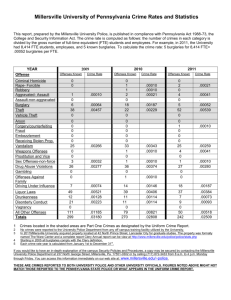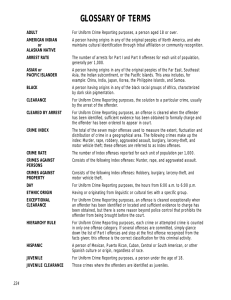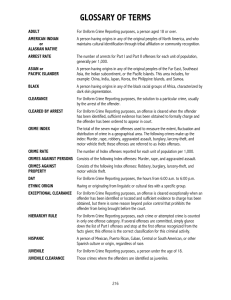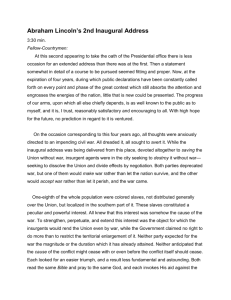CALCULATIONS OF RATES AND TRENDS
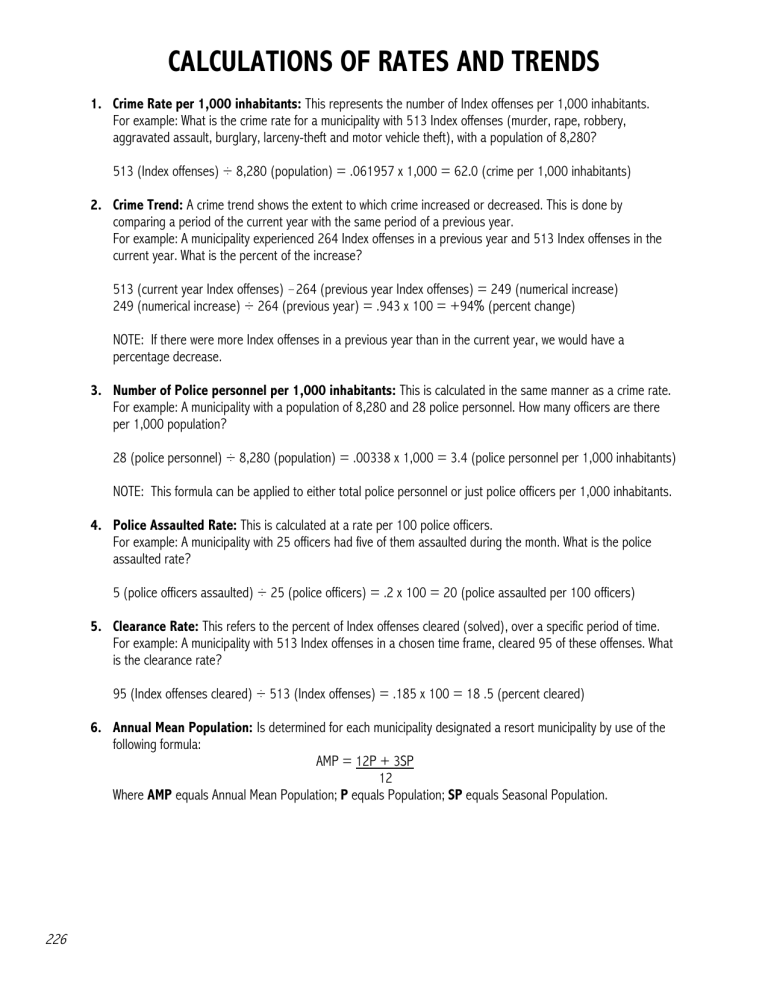
226
CALCULATIONS OF RATES AND TRENDS
1. Crime Rate per 1,000 inhabitants: This represents the number of Index offenses per 1,000 inhabitants.
For example: What is the crime rate for a municipality with 513 Index offenses (murder, rape, robbery, aggravated assault, burglary, larceny-theft and motor vehicle theft), with a population of 8,280?
513 (Index offenses) ÷ 8,280 (population) = .061957 x 1,000 = 62.0 (crime per 1,000 inhabitants)
2. Crime Trend: A crime trend shows the extent to which crime increased or decreased. This is done by comparing a period of the current year with the same period of a previous year.
For example: A municipality experienced 264 Index offenses in a previous year and 513 Index offenses in the current year. What is the percent of the increase?
513 (current year Index offenses) 264 (previous year Index offenses) = 249 (numerical increase)
249 (numerical increase) ÷ 264 (previous year) = .943 x 100 = +94% (percent change)
NOTE: If there were more Index offenses in a previous year than in the current year, we would have a percentage decrease.
3. Number of Police personnel per 1,000 inhabitants: This is calculated in the same manner as a crime rate.
For example: A municipality with a population of 8,280 and 28 police personnel. How many officers are there per 1,000 population?
28 (police personnel) ÷ 8,280 (population) = .00338 x 1,000 = 3.4 (police personnel per 1,000 inhabitants)
NOTE: This formula can be applied to either total police personnel or just police officers per 1,000 inhabitants.
4. Police Assaulted Rate: This is calculated at a rate per 100 police officers.
For example: A municipality with 25 officers had five of them assaulted during the month. What is the police assaulted rate?
5 (police officers assaulted) ÷ 25 (police officers) = .2 x 100 = 20 (police assaulted per 100 officers)
5. Clearance Rate: This refers to the percent of Index offenses cleared (solved), over a specific period of time.
For example: A municipality with 513 Index offenses in a chosen time frame, cleared 95 of these offenses. What is the clearance rate?
95 (Index offenses cleared) ÷ 513 (Index offenses) = .185 x 100 = 18 .5 (percent cleared)
6. Annual Mean Population: Is determined for each municipality designated a resort municipality by use of the following formula:
AMP = 12P + 3SP
12
Where AMP equals Annual Mean Population; P equals Population; SP equals Seasonal Population.
